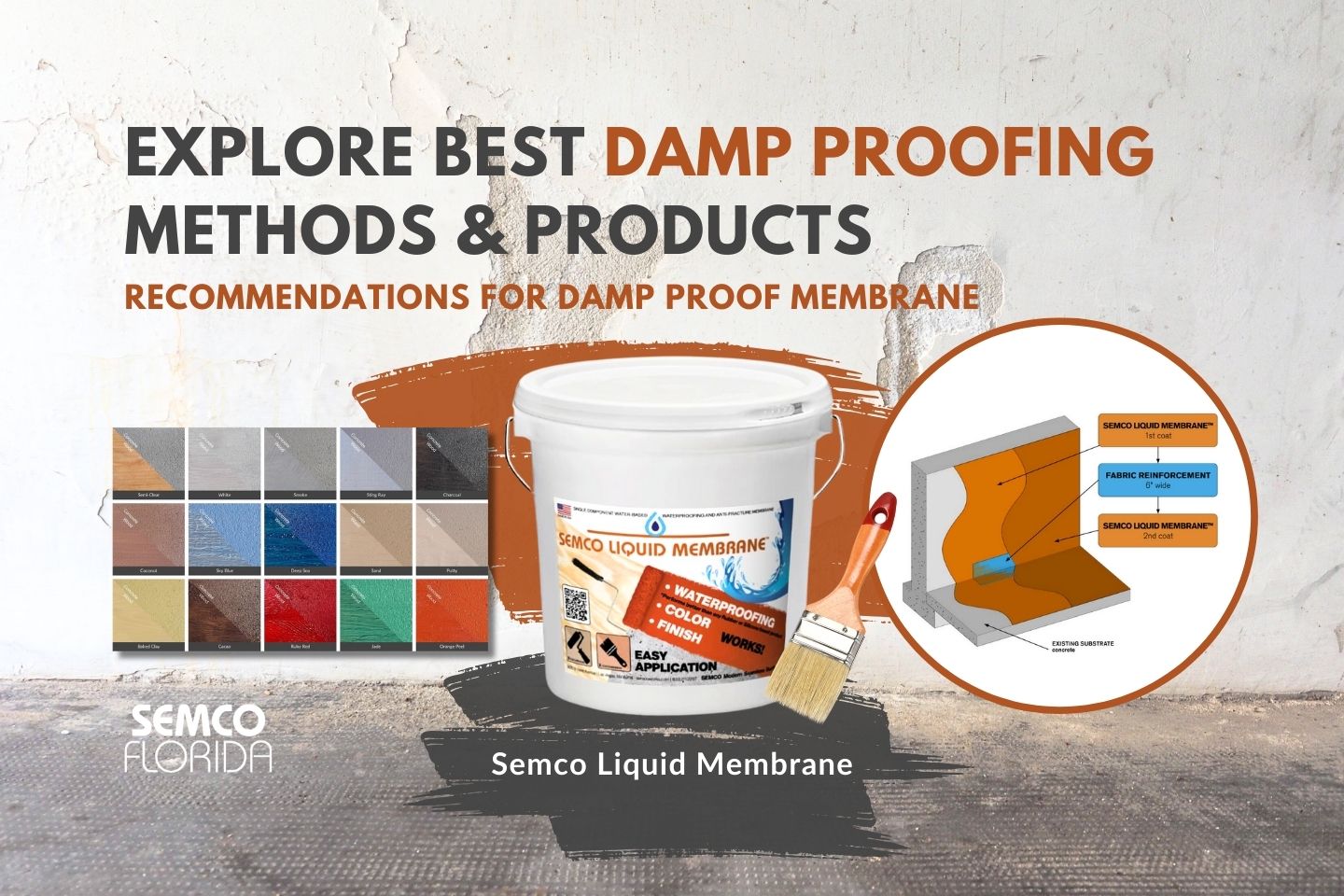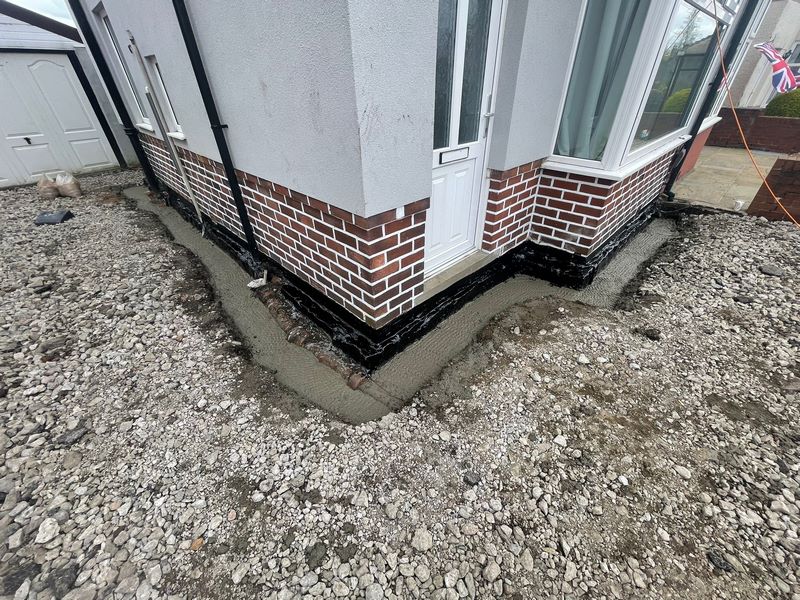Quick tips to reduce moisture buildup with mould treatment newcastle
Wiki Article
Checking Out the Numerous Techniques and Solutions for Effective Damp Proofing
Moisture in buildings poses considerable challenges to both structural stability and interior air quality. Various methods and remedies have arised to combat this pervasive issue. From conventional damp-proof membrane layers to cutting-edge chemical therapies, each method supplies distinct benefits. Recognizing these choices is important for efficient wetness control. Nevertheless, picking the best option depends upon certain building conditions and needs, prompting further exploration right into the most reliable wet proofing approaches offered.Understanding the Reasons For Dampness
Dampness can occur from different sources, understanding these reasons is vital for reliable remediation. Commonly, dampness originates from 3 primary sources: increasing wet, permeating damp, and condensation. Climbing damp takes place when groundwater takes a trip up via permeable materials, such as brick or stone, frequently as a result of a lack of an effective obstacle (damp removal newcastle). Passing through damp is commonly triggered by external factors, consisting of roofing system leakages, defective rain gutters, or damaged walls, enabling water to penetrate a building. Condensation, on the various other hand, results from excess wetness airborne, often intensified by inadequate air flow and temperature level differences, leading to water beads basing on surfaces. Recognizing these underlying problems is vital, as each kind of moisture calls for a customized technique for removal. Appropriate assessment assists in determining the most reliable services, inevitably securing the structural stability of a building and improving indoor air high qualityStandard Damp-Proof Membrane Layers

Chemical Damp-Proofing Solutions
Chemical damp-proofing services supply a cutting-edge technique to avoid moisture breach in buildings. These methods usually involve the application of liquid chemicals that permeate stonework and form an obstacle against climbing moist. Typically utilized chemicals consist of silanes, siloxanes, and other water-repellent agents that react with surface area products to create a hydrophobic layer.The application process typically requires drilling openings into the walls, infusing the chemical remedy, and allowing it to cure. This approach is specifically helpful for older frameworks where traditional damp-proof membranes might be not practical. In addition, chemical damp-proofing can be less turbulent and more cost-effective than substantial restoration projects.While effective, these solutions depend on appropriate application and ecological problems for peak performance. Routine maintenance and monitoring are vital to assure the longevity of the damp-proofing treatment. In general, chemical damp-proofing represents a versatile choice for guarding buildings versus moisture-related damageDental Caries Wall Building And Construction Methods
Tooth cavity wall surface building methods use countless benefits, particularly in moisture control and energy performance. By incorporating an air gap between 2 layers of stonework, these walls effectively alleviate water access while enhancing insulation. This combination not only safeguards structures from wetness yet additionally adds to decreased energy intake.Advantages of Cavity Wall Surfaces
When taking into consideration effective wet proofing approaches, the advantages of tooth cavity walls attract attention prominently. Cavity wall surfaces consist of two different layers, creating an air space that effectively lowers dampness infiltration. This layout minimizes the risk of dampness, as the external wall acts as an obstacle against rainfall and water access. In addition, tooth cavity wall surfaces improve thermal insulation, which adds to energy effectiveness by decreasing warmth loss. They likewise supply sound insulation, aiding to produce a quieter indoor setting. Furthermore, the air gap permits for ventilation, which assists in wetness control and reduces the chance of mold and mildew development. These benefits not only boost the total convenience of a structure yet also contribute to its durability and architectural integrity.Moisture Control Techniques
Reliable moisture control techniques are important in cavity wall building and construction to guarantee long-lasting defense against dampness. One primary approach includes the consolidation of weep holes, which promote water drain from the dental caries, protecting against buildup. In addition, using breathable membrane layers can aid manage moisture levels while permitting trapped vapor to run away. Appropriate positioning of insulation is likewise vital, as it ought to not block drainage courses. Making sure that the external leaves of the cavity wall are built with water-resistant materials enhances total toughness. Routine maintenance checks are vital to identify any blockages or damages early, protecting the framework's integrity. Inevitably, a mix of these strategies develops a durable protection versus wetness invasion in cavity walls.
Insulation and Energy Effectiveness
Insulation plays a crucial role in boosting energy effectiveness within tooth cavity wall surface building and construction. By including shielding products, these wall surfaces create a thermal obstacle that decreases warmth loss and decreases power consumption. Efficient insulation not only assists maintain a steady interior temperature however likewise reduces the threat of moisture, as it protects against condensation within the wall dental caries. Various techniques, such as making use of rigid foam boards or mineral woollen, can be employed to attain perfect insulation performance. Furthermore, appropriate installment is vital to assure that spaces and spaces are minimized, which can or else jeopardize power performance. Inevitably, a well-insulated dental caries wall adds significantly to total sustainability and reduces home heating and air conditioning costs for property owners.Exterior Damp Proofing Methods
External moist proofing techniques are important for securing structures from dampness infiltration. 2 reliable techniques include the application of water-proof membranes and the setup of French drains. These remedies assist reduce water build-up and preserve the integrity of structures.Waterproof Membrane Layer Application
While numerous techniques exist for stopping wetness ingress, the application of water resistant membrane layers continues to be a very reliable outside moist proofing strategy. These membrane layers are typically made from products such as polyethylene, rubber, or customized bitumen, providing a durable obstacle against water penetration. The installation process involves applying the membrane to the exterior surface areas of foundations or walls, making sure full insurance coverage to protect against leaks. Correct adhesion and sealing at joints are crucial to optimizing performance. Water-proof membranes can be used in various types, including fluid finishings and sheet membrane layers, permitting versatility based upon the details requirements of the framework. This technique not just safeguards buildings from dampness yet additionally enhances their durability and architectural integrity.French Drain Setup
One efficient approach for managing groundwater and stopping wetness build-up around a building's foundation is the installment of a French drainpipe. This drain system contains a trench loaded with gravel and a perforated pipeline that redirects surface water away from the structure. Correct installment calls for cautious planning, making certain that the drain inclines away from the structure to facilitate ideal water flow. In addition, the place of the drain is important; it needs to be positioned in areas prone to merging or excess dampness. Routine upkeep, including clearing up debris damp removal newcastle from the crushed rock and making sure the pipe remains unobstructed, is important for long-lasting efficiency. Eventually, a well-installed French drain can greatly lower the threat of water-related issues in cellars and foundations.Inside Waterproofing Approaches
Inside waterproofing strategies are important for shielding a building's inside from moisture infiltration and prospective water damage. These methods generally involve the application of specific products and methods developed to develop a wetness obstacle within the framework. One common approach is making use of water-proof coverings or sealers on walls and floors, which prevent dampness from penetrating surfaces.Additionally, installing interior drainage systems, such as sump pumps, can efficiently handle water accumulation in cellars and crawl rooms. One more approach includes making use of vapor barriers, which are mounted to prevent wetness movement from the ground right into living spaces.Moreover, resolving any cracks or voids in wall surfaces or structures with ideal sealants assures a detailed defense versus water breach. By executing these interior waterproofing methods, residential property proprietors can considerably reduce the danger of mold and mildew development, architectural damages, and various other moisture-related issues. Proper implementation of these methods is important for lasting defense and structure integrity.Normal Upkeep and Evaluation Practices
Regular upkeep and examination practices are important for guaranteeing the long-lasting performance of moist proofing remedies in any kind of building. Regular checks make it possible for homeowner to determine very early indicators of moisture intrusion, such as peeling paint, mold and mildew development, and moldy smells. These indications can indicate underlying problems that need prompt attention.Inspections ought to be carried out a minimum of each year, concentrating on prone locations like basements, creep spaces, and outside wall surfaces. During these analyses, homeowner need to take a look at sealants, drain systems, and ventilation to verify they work correctly.Additionally, maintaining seamless gutters and downspouts is important, as clogged systems can bring about water build-up near the foundation. Applying a routine maintenance routine, together with timely repairs, can significantly prolong the lifespan of wet proofing steps and safeguard the structural honesty of the building. Aggressive procedures ultimately add to the overall health and wellness of the living atmosphere.Often Asked Inquiries
How Much Time Does Damp Proofing Commonly Last?
The duration of moist proofing efficiency varies, generally lasting in between 20 to 50 years. Elements such as application top quality, ecological conditions, and upkeep techniques considerably influence the long life of the wet proofing treatment.
Can I Damp Proof My Home Myself?
The specific contemplated the usefulness of do it yourself damp proofing. With correct study and the right materials, it is feasible. However, they additionally acknowledged the value of professional support to guarantee durable efficiency and prevent future problems.What Are the Signs of Ineffective Damp Proofing?
Signs of inadequate wet proofing consist of relentless stuffy smells, noticeable mold development, peeling off paint, damp spots on walls, and timber decay - damp specialist newcastle. Homeowners should address these concerns quickly to stop further damages and health worriesDoes Damp Proofing Affect Indoor Air High Quality?

Just How Much Does Specialist Damp Proofing Expense?
Specialist damp proofing expenses differ significantly, generally varying from $1,000 to $5,000 depending upon the residential property's size, the extent of the wet issue, and chosen techniques. Each situation calls for a tailored evaluation for accurate prices. Commonly, dampness originates from 3 key resources: rising moist, permeating wet, and condensation. When considering efficient damp proofing approaches, the advantages of cavity wall surfaces stand out prominently. Outside damp proofing approaches are crucial for securing structures from wetness infiltration. While different approaches exist for avoiding wetness access, the application of waterproof membranes stays an extremely efficient outside moist proofing strategy. Indicators of inadequate damp proofing include consistent mildewy smells, noticeable mold growth, peeling paint, damp patches on wall surfaces, and wood decay.Report this wiki page